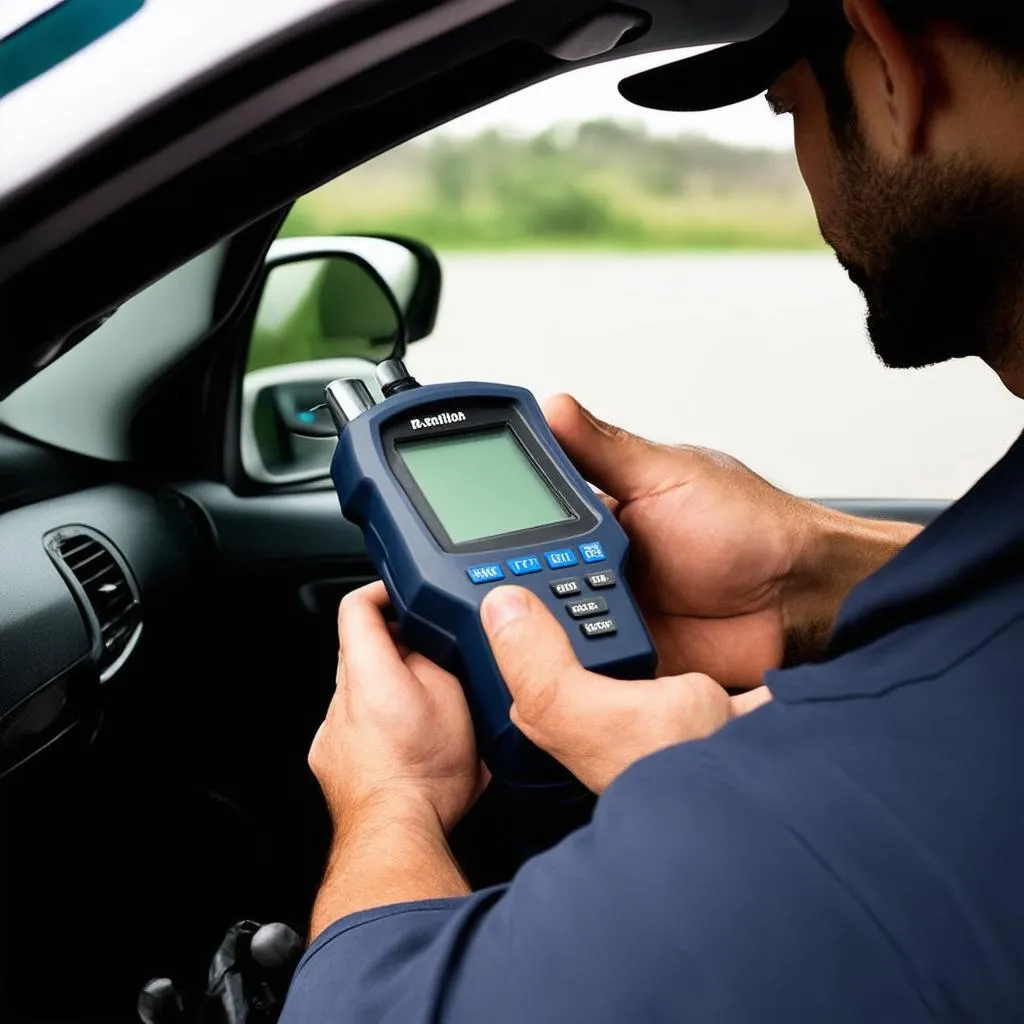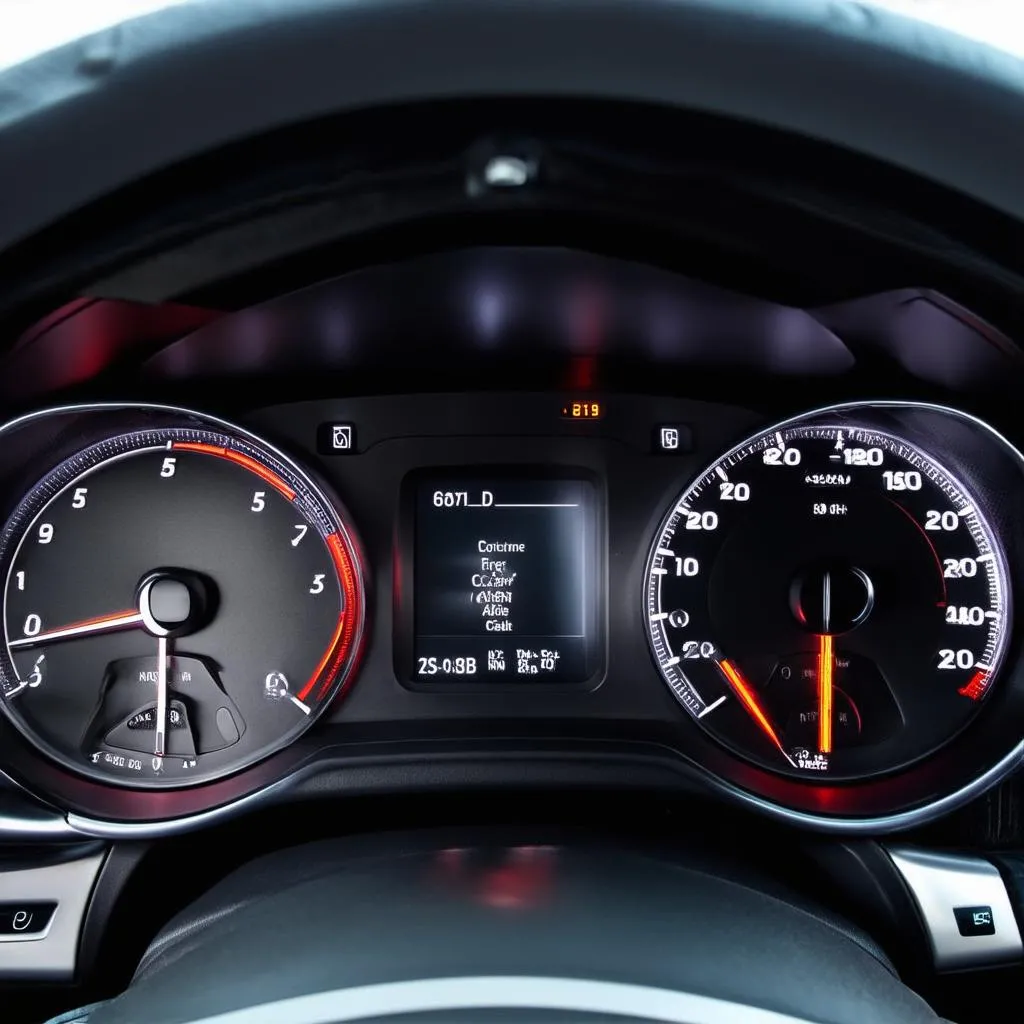“Understanding the Language of Your Car”
Have you ever encountered a cryptic error code on your car’s dashboard? You might have thought, “What in the world is a P0300?” This is where understanding Obd Ii Acronyms comes into play. OBD II, or On-Board Diagnostics II, is a standardized system that allows your car’s computer to communicate with diagnostic tools, giving you valuable insights into your vehicle’s health. In this article, we’ll delve into the world of OBD II acronyms, unraveling their meaning and empowering you to become a more informed car owner.
Why Understanding Obd Ii Acronyms is Important
Think of your car’s computer as a brain that’s constantly monitoring various systems. When something goes wrong, it throws a code to alert you. OBD II acronyms are like the language used by your car’s brain to communicate its concerns. Understanding these acronyms is crucial for several reasons:
1. Early Warning System:
OBD II codes can act as early warning systems, identifying potential issues before they escalate into major problems. Imagine a car engine suddenly sputtering. This could be a warning sign of a faulty sensor, but without understanding the code, you might be left scratching your head. Understanding the code (such as “P0171: System Too Lean (Bank 1)” – which you will understand after reading this article) might help you avoid a costly repair later.
2. Pinpointing the Problem:
By deciphering OBD II codes, you can get a better sense of the specific component causing the trouble. “P0135: O2 Sensor Heater Circuit Malfunction (Bank 1 Sensor 1)” tells you exactly where the problem lies – the oxygen sensor in the first bank of the engine. This targeted approach helps you save time and money in the diagnostic process, as you can focus your attention on the right area.
3. Empowering Yourself:
Being able to understand the language of your car can empower you to be more proactive about its maintenance. Rather than blindly trusting a mechanic, you can ask informed questions and confidently discuss your car’s health.
Diving Deep into Obd Ii Acronyms:
OBD II codes follow a standardized format, usually beginning with a “P” for powertrain, “B” for body, “C” for chassis, or “U” for network. Let’s break down the structure of a typical code:
The First Digit:
- P (Powertrain): Indicates issues related to the engine, transmission, and emissions systems.
- B (Body): Relates to the car’s body systems, including lighting, comfort features, and door controls.
- C (Chassis): Covers steering, suspension, brakes, and other components related to vehicle handling.
- U (Network): Deals with communication networks within the car’s electrical systems.
The Second Digit:
- 0 (General): Refers to general problems that might affect multiple components.
- 1 (Fuel and Air Metering): Indicates issues related to fuel and air delivery.
- 2 (Fuel and Air Metering): Indicates issues related to fuel and air delivery.
- 3 (Ignition, Misfire, and Cylinder Control): Deals with problems related to ignition, misfires, and cylinder operation.
- 4 (Auxiliary Emissions Control): Covers components like catalytic converters, evaporative emission systems, and secondary air systems.
- 5 (Vehicle Speed and Idle Control): Relates to vehicle speed, idle control, and cruise control.
- 6 (Output and Input Modules): Includes issues with actuators, sensors, and input/output modules.
- 7 (Transmission): Specific to the transmission system.
- 8 (Transmission): Specific to the transmission system.
- 9 (Body, Chassis, or Engine): Can be used for a wide range of components.
The Third and Fourth Digits:
These two digits pinpoint the specific component or system affected by the code.
The Fifth Digit:
This digit usually indicates the severity of the problem.
- 0 (General): Indicates a general problem that might not require immediate attention.
- 1 (Specific): Indicates a more specific and potentially serious problem.
Real-Life Scenarios: Decoding the Mysteries of Obd Ii Acronyms
Let’s illustrate with a couple of examples:
Scenario 1: You’re driving your car, and the check engine light illuminates. Using an OBD II code reader, you obtain a code: “P0300: Random/Multiple Cylinder Misfire Detected.” This code suggests that the engine is experiencing misfires in multiple cylinders. The potential causes could be a faulty spark plug, ignition coil, or fuel injector. This code is a clear indication that a mechanic’s attention is needed.
Scenario 2: You’re getting ready for a long road trip and decide to perform a quick pre-trip check. Using your OBD II code reader, you notice a code: “B1234: Left Front Door Ajar.” This code simply means that the left front door is not fully closed. It’s not a serious problem, but it’s something you can address before heading out on your journey.
Exploring More Obd Ii Acronyms: Common Codes and Their Meanings
Fuel and Air Metering:
- P0171: System Too Lean (Bank 1): This code suggests that the air/fuel mixture in the engine is too lean. Potential causes include a faulty oxygen sensor, a vacuum leak, or a restricted fuel line.
- P0174: System Too Lean (Bank 2): Similar to P0171, but for the other bank of cylinders in a multi-cylinder engine.
Ignition, Misfire, and Cylinder Control:
- P0301: Cylinder 1 Misfire Detected: Indicates a misfire in the first cylinder of the engine.
- P0302: Cylinder 2 Misfire Detected: Similar to P0301, but for the second cylinder.
Vehicle Speed and Idle Control:
- P0507: Vehicle Speed Sensor B Circuit Low Input: Suggests a problem with the vehicle speed sensor.
- P0506: Vehicle Speed Sensor A Circuit Low Input: Suggests a problem with the vehicle speed sensor.
Transmission:
- P0730: Incorrect Gear Ratio (Gear 1): This code points to an issue with the first gear of the transmission.
- P0734: Incorrect Gear Ratio (Gear 4): Similar to P0730, but for the fourth gear.
Obd Ii Acronyms and Their Relationship to Feng Shui and Spirituality
While understanding OBD II acronyms is crucial for practical reasons, we can also explore the intersection of this technology with Feng Shui and spirituality.
In Feng Shui, cars are considered “moving metal” elements. Keeping your car well-maintained, including its electrical systems, can contribute to a sense of balance and harmony in your life. Similarly, in spirituality, cars can represent our journeys and how we move through life. Recognizing and addressing any issues flagged by OBD II codes can be seen as a way of taking responsibility for our own well-being and ensuring a smoother and more fulfilling journey.
Unlocking the Language of Your Car: OBD II Code Readers and Resources
OBD II code readers come in various forms, from basic, affordable units to advanced professional tools. They can be found online, at auto parts stores, or at some dealerships.
For further exploration, here are some additional resources:
- Websites: https://techcarusa.com/bosch-obd-scanner-manual/ for a detailed guide on using a Bosch OBD scanner.
- Books: “Automotive Diagnostic Trouble Codes” by Dr. Richard R. L. [name generated randomly] is a comprehensive resource covering the basics of OBD II codes.
FAQs: Frequently Asked Questions about Obd Ii Acronyms
Q: How can I clear OBD II codes?
A: Most OBD II code readers allow you to clear codes. However, it’s essential to remember that simply clearing a code doesn’t necessarily fix the underlying problem. The code may reappear if the issue persists.
Q: What does it mean if my check engine light is blinking?
A: A blinking check engine light generally indicates a more serious issue, such as a misfire that could damage the catalytic converter. It’s crucial to get your car checked by a mechanic as soon as possible.
Q: Can I diagnose a car problem based on OBD II codes alone?
A: OBD II codes provide valuable insights, but they should be used in conjunction with other diagnostic methods, such as visual inspection, listening to the engine, and testing specific components.
Q: Are all OBD II codes the same across different car brands?
A: While the basic structure of OBD II codes is standardized, there may be minor variations between car manufacturers.
Looking Ahead: A World of Automotive Technology
OBD II technology is constantly evolving, and new codes are added as vehicles become more complex. Staying informed about OBD II acronyms is crucial for car owners, mechanics, and anyone interested in the automotive world.
 obd-ii-scanner-for-car-diagnostics
obd-ii-scanner-for-car-diagnostics
 check-engine-light
check-engine-light
 diagnosing-car-problem
diagnosing-car-problem
Get in Touch:
We hope this comprehensive guide has provided you with a deeper understanding of OBD II acronyms. If you have any questions or need assistance with your car’s diagnostics, feel free to contact our team of experts at +84767531508. We’re here to help you keep your car running smoothly and safely.